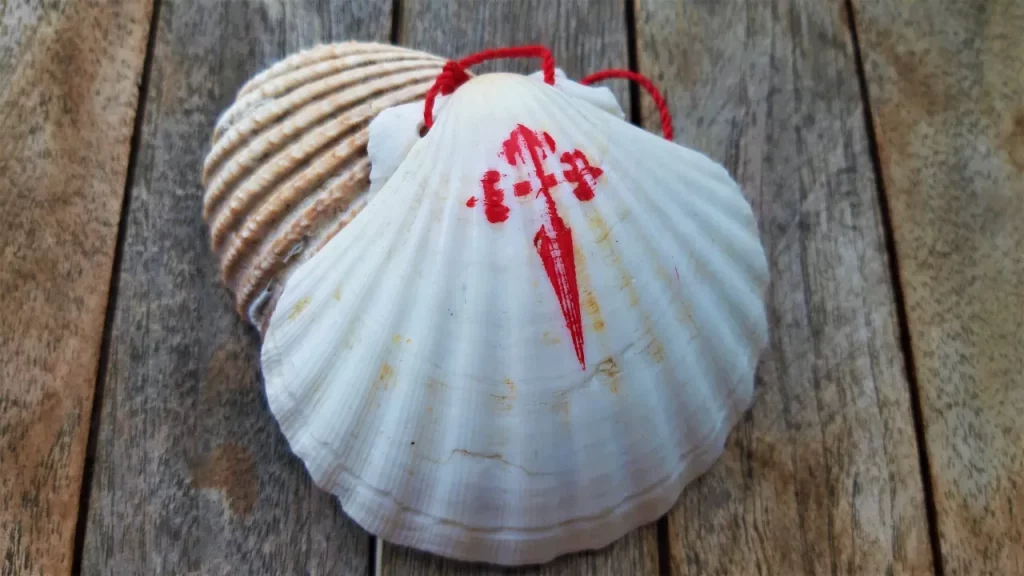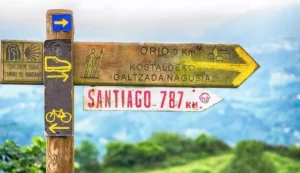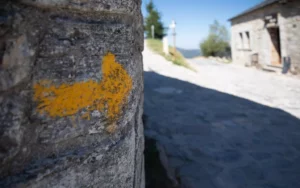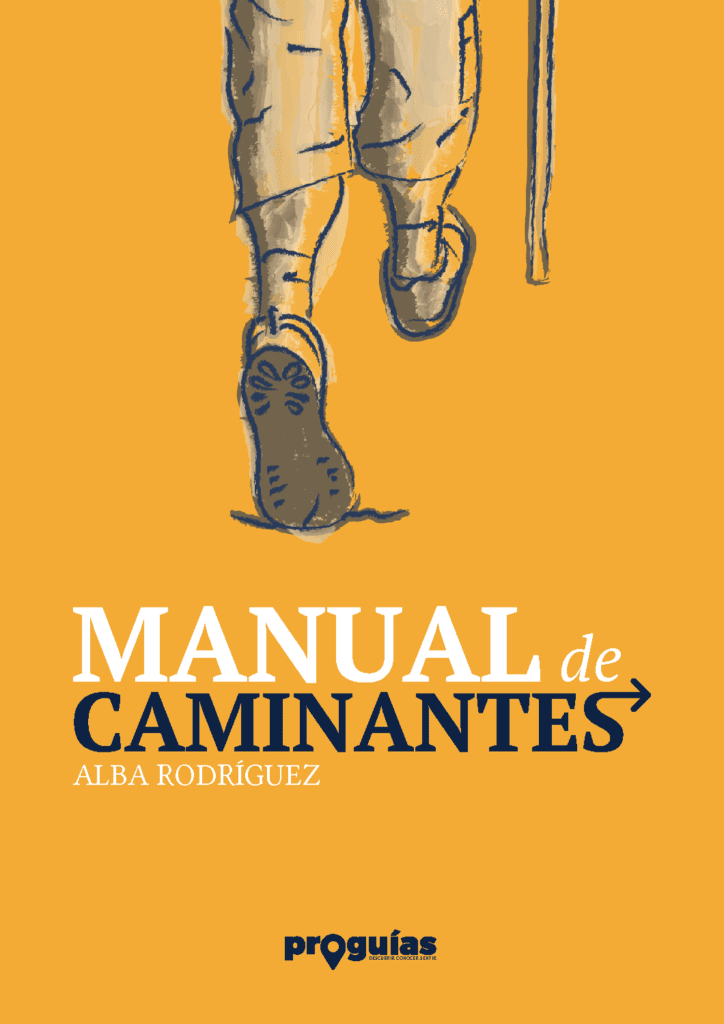Quick question: what do they have in common Las Meninas by Velázquez and the shells that we see in many pilgrims' backpacks on the Camino de Santiago? Exactly: one of the main symbols of the Camino de Santiago: the red cross formed by the edge of a sword and three fleurs-de-lis. Today we talk about the cross of Santiago.
The Camino de Santiago is an itinerary full of symbols. In other entries of this Pilgrim's Blog we have already talked about some of the main ones, like the pilgrim's shellor the representation of one's own path, in a symbolic way, through the game of the goose. Now it is time to focus on a symbol that is half cross, half sword.
The origin
As is usually the case when we refer to symbols of great importance, there are different theories about their origin. The cross of Santiago, for example, has been linked to the small crosses that the crusaders took to the Holy Land during the wars for territorial control of those places and whose larger arm was pointed, so that it could be nailed to the ground as a way of making a claim.
It has also been linked to the white banner with the red cross which, according to the legend of the battle of Clavijo, was carried by the apostle St. James when he suddenly appeared in the middle of the battle on his white horse to defeat the Muslim army.
The truth is that, beyond crusaders and apparitions, the origin of the cross seems to be directly related to the process by which the apostle James becomes a military saint. That is to say, as the figure of James himself - previously a fisherman turned apostle - begins to be used systematically to justify and reinforce the idea of the fight against the infidel and the advance of the Christian kingdoms of the Iberian Peninsula towards the south.
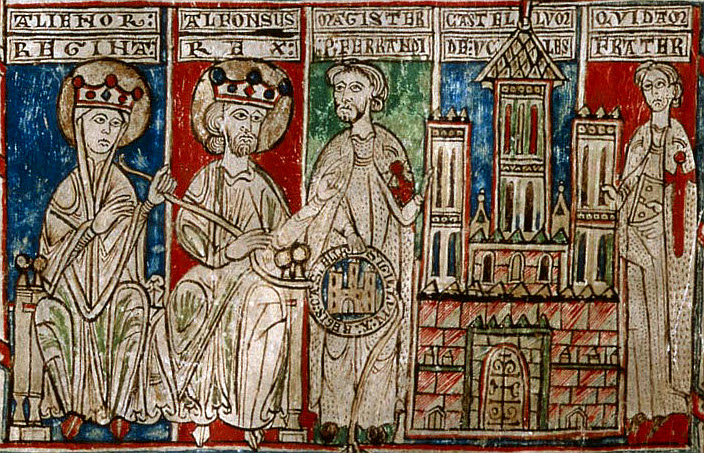
The subsequent popularisation and, undoubtedly, its current importance among the symbols of the Way of St. James is due to the Order of the Knights of St. James. This order, founded in 1170 as an institution that was both religious and military, was intended to defend pilgrims on the roads to Compostela from robbers and bandits and to fight to expel the Muslims from the Iberian Peninsula. Five years later, in 1175, Pope Alexander III approved its rules, which definitively established the red cross of Santiago as the main identifying symbol of the order.
However, other religious orders have also used the cross of Santiago, such as the order of Santiago de la Espada - a Portuguese branch of the order of Santiago founded in 1170. The members of the chapter of the cathedral of Santiago also wear this symbol on their attire, although they do not belong to the Knights of Santiago.
The symbol and its parts
We have already indicated that the long arm of this cross represents the edge of a sword. It is clear that the sword symbolises the use of arms in defence of Christianity. But a sword was also the instrument used to behead the apostle himself. James was, in fact, the first of the apostles to be martyred for his faith.
The colour red - gules, in heraldry - is linked to blood, also with a double meaning: on the one hand, the blood of the apostle himself that is shed during his martyrdom. On the other, the blood of Christian soldiers shed in battles for territorial control of the peninsula.
Finally, the symbol would not be complete without taking into account the fleurs-de-lis that appear on the arms and the hilt of the sword. In other words, the cross of St James is not simply a cross with its pointed greater arm. From the Middle Ages, the fleur-de-lis symbolised the "unblemished honour" associated with the chivalric ideal, although it also represented obedience and submission to Christian commandments.
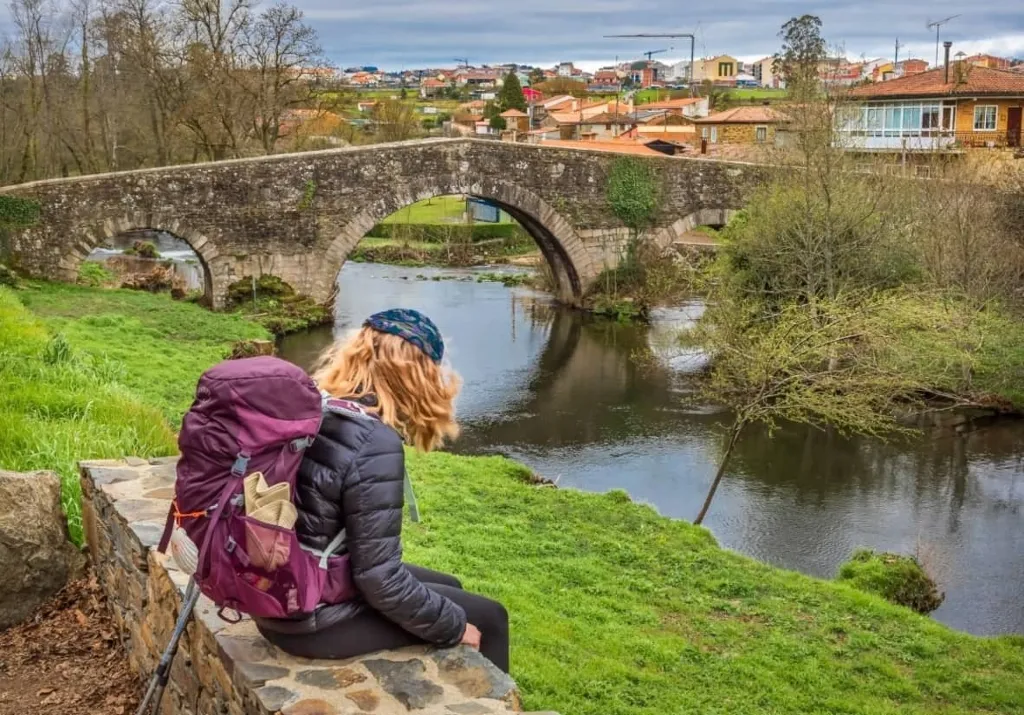
for the Sarria-Santiago section
The symbol today
After the disappearance of the Knights of Santiago as a religious and military order, the use of the red cross continued to spread until it became one of the main symbols of the Way of St. James. Today it can be seen in the heraldry of several municipalities that once belonged to the order, in the provinces of Toledo, Cuenca or Ciudad Real, and also in others that did not belong to the order, such as the city of Santiago de Compostela itself. The Compostela coat of arms combines, in fact, the cross gules with the representation of the apostolic sepulchre in white marble.
The cross has even spread to less institutional shields, such as those of Galician football teams like Celta de Vigo, Racing de Ferrol or SD Compostela. And also to the famous Santiago cake: one of the most typical desserts not only in Compostela, but throughout Galicia.
And the Meninas?
Finally, let us go back to the beginning. What do they have to do with Las Meninas in all this? As you may know, the author of the painting himself, Diego Velázquez, depicts himself in the scene in which the Meninas and other everyday characters from the court of Philip IV appear. If you look on Velázquez's own breastplate, you will see that the cross of Santiago is clearly highlighted.
The truth is that the original painting, painted in 1656, did not contain this cross. It was added in 1658 when Velázquez gained admission to the order - which at that time had little in the way of an institution dedicated to pilgrims and to spreading Christianity on the Iberian peninsula, for obvious reasons, but still possessed great prestige.


